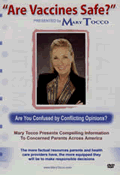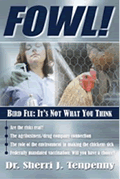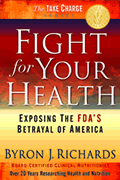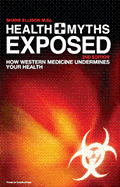Other
Tenpenny
Articles:
The Flu Season Campaign Begins
Vaccinations and The Right to Refuse
WHY IS CHILDHOOD ARTHRITIS ON THE RISE?
Dr.
Sherri Tenpenny, DO
July 6, 2007
NewsWithViews.com
More children are suffering from arthritis than ever before. Unpublished data released June, 2007 from a study conducted jointly by the American College of Rheumatology and the American Academy of Pediatrics at the behest of the Centers for Disease Control and Prevention (CDC) states nearly 300,000 children in the United States have significant arthritis. Dr. Brian Feldman, chief of the arthritis program at the Bloorview MacMillan Children's Center in Toronto states that this number is �probably an underestimate� since it only takes into account those children who have actually been diagnosed with arthritis. An Australian study confirms that the rate of childhood arthritis is four to six times higher than rates typically quoted.[1]
Physicians are taught about 20 percent of children who are diagnosed with arthritis go on to develop chronic disease. However, new research suggests that the percentage is much greater than previously thought. Even when the acute painful episode subsides or goes into remission, relapses often occur. In a study of children who had arthritis isolated to one joint, called oligoarticular arthritis, 60 percent went into remission. Of those, nearly 40 percent had reoccurrences.[2]
Despite assurances by the Institute of Medicine and the FDA that vaccines are safe and have no association with arthritis, a review of medical literature suggests a different conclusion.
Arthritis and the Hepatitis b Vaccine
Reports of the association between the hepatitis b vaccine and arthritis have been documented since 1990. At least two mechanisms of action have been described. Inflammatory conditions, including joint pain, vasculitis (blood vessel inflammation) or erythema nodosum (tender nodules), are thought to be caused by immune complexes in the tissues. Complexes are a combination of the viral antigen from the shot and the antibodies induced by the antigen. If the particles reside in the tissues transiently, the condition eventually resolves. Long term attachment of the complexes can lead to progressive deterioration and residual disease.[3]
Another mechanism proposes that severe arthritis, such as rheumatoid arthritis, may be triggered by the vaccine if the person has a genetic tendency toward an autoimmune disease and then is vaccinated.[4] Genetic predisposition cannot be determined in advance of the vaccine. In essence, this mechanism blames the bad outcome from the vaccine on the defective genetics of the recipient.
The hepatitis b vaccine has been recommended for newborns since 1991 and is generally administered within the first 48 hours of life. The value of this vaccination of should certainly be questioned. For example, an Italian study touted a 46 percent reduction in the number of cases of hepatitis b in adults, attributed to the vaccination of children. This seems like a significant contribution to health until the study is closely inspected. Then the significance of the report withers away. The study concludes that the number of acute hepatitis b infections decreased from 5.4 per one million persons to 2.9 per one million persons between 1990 and 1998. This was the way researchers arrived at a 46 percent reduction in disease. A similar study from France boasted that the widespread vaccination of hundreds of thousand 11-year-old adolescents could prevent 30 from contracting liver cancer as adults.[5] This is how experts to promote universal vaccination of newborns.
The World Health Organization denies the association between hepatitis b vaccination and arthritis, claiming, �the medical literature comprises mainly case reports, case series and a few case-control studies,� reports considered to be marginally scientific. Unless the numbers of individuals are found to be statistically significant in proportion to the number of vaccines that are given worldwide, clinically observed correlations are dismissed. The Global Advisory Committee on Vaccine Safety (GACVS) concluded in 2006 that there was �no convincing evidence to support an association between hepatitis B vaccination and rheumatoid arthritis.�[6] Making this conclusion by Committee is an easy way to negate all clinical evidence to the contrary, an easy way to dismiss the illness of an individual.
Arthritis and the Rubella Vaccine in the MMR
Acute arthritis following rubella vaccinations have been reported since 1972, the earliest use of the vaccine. All of the symptoms are lumped and called an arthropathy, defined as any abnormality of a joint. The term encompasses joint stiffness, arthralgia (subjective joint pain), and arthritis (joint pain that is accompanied by swelling, redness, heat, pain, and/or decreased range of motion.) Arthropathy after a rubella shot usually occurs within 10 to 28 days and tends to appear suddenly. The joints involved, in order of decreasing frequency, are fingers, knees, wrists, elbows, ankles, hips, and toes.[7] The rubella strain used in today�s rubella vaccine, strain RA27/3, reportedly causes post-vaccination joint symptoms in approximately 15% of recipients.[8]
While reports of arthropathy after rubella vaccination have most commonly occurred in adult females, extremely painful joints have occurred in children, reported as two different syndromes. The "arm syndrome" causes severe pain in the arm and the hand, and tingling that is worse at night. The "catcher's crouch" syndrome causes severe knee pain upon arising in the morning. Both can occur within two months after rubella vaccination. As an example, The Journal of Arthritis and Rheumatism published a report in November, 2005 about eleven children who suffered recurrent episodes of catcher's crouch after receiving a rubella vaccine.[9]
Another type of painful condition was reported in 2004 involving an 11 year-old girl who was diagnosed with �complex regional pain syndrome type I� (CRPS-I) after receiving a rubella vaccination.[10] CRPS-I, referred to as reflex sympathetic dystrophy prior to 1994, is characterized by severe, deep, burning, unrelenting pain without discernible nerve injury. Treatment involves physical therapy, intensive psychological care to cope with the debilitating pain, nerve blocks, pain medication infusion pumps. The long-term prognosis for recovery is poor, meaning, the damage can be permanent.
|
Subscribe to the NewsWithViews Daily News Alerts! |
As stated by Dr. Feldman, �The whole idea that 80% of children [with arthritis] will have permanent remission is just wrong. Most of our patients will have arthritis well into adulthood.� Those with post-vaccination arthritis are more likely to require substantial drugs to control the progression of their disease, one that has no cure. While not every child has vaccine-induced arthritis, there is a strong possibility that many children can attribute their condition to the hepatitis b or rubella vaccine. Those children have become customers of the pharmaceutical industry for life as a result of vaccination.
Footnotes:
1,
Childhood
Arthritis Prevalence, Prognosis Eyed. Pediatric News. Volume 41,
Issue 6, Page 36 (June 2007)
2,
Ibid. Pediatric News. June, 2007.
3,
J Sibilia, J F Maillefert. Vaccination and rheumatoid arthritis. Ann
Rheum Dis 2002;61:575-576
4,
Ibid. J Sibilia
5,
Ibid. J Sibilia
6,
Global Advisory Committee on Vaccine Safety. "Hepatitis
B vaccination and rheumatoid arthritis."
7,
Adverse Effects of Pertussis and Rubella Vaccines. The National Academies
Press. (1991) p. 187.
8,
Viral
arthritis
9,
Spruance, Spotswood, M.D Chronic arthropathy associated with rubella
vaccination. Arthritis & Rheumatism. Volume 20, Issue 2, Pages 741
- 747. (Nov. 2005)
10,
Hakan
Genc, et al. Complex regional pain syndrome type-I after rubella vaccine.European
Journal of Pain. Volume 9, Issue 5, October 2005, Pages 517-520.
�
2007 Sherri Tenpenny - All Rights Reserved
Dr. Sherri Tenpenny is respected as one of the country's most knowledgeable and outspoken physicians regarding the impact of vaccines on health. Through her education company, New Medical Awareness, LLC, she spreads her vision of retaining freedom of choice in healthcare, including the freedom to refuse vaccination. Dr. Tenpenny's new book, FOWL! Bird Flu: It's Not What You Think, was released in April, 2006.
Dr. Tenpenny is a regular columnist for www.NewsWithViews.com. Her 3-hour vaccine DVD, Vaccines: The Risk, The Benefits and The Choices and her new book FOWL! are available through this site; other tapes and materials are available www.DrTenpenny.com
Website: www.DrTenpenny.com
E-Mail: nmaseminars@aol.com
More children are suffering from arthritis than ever before.















